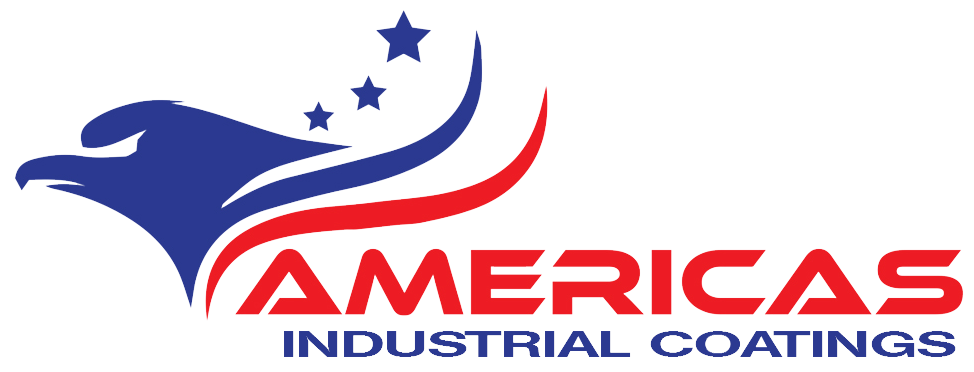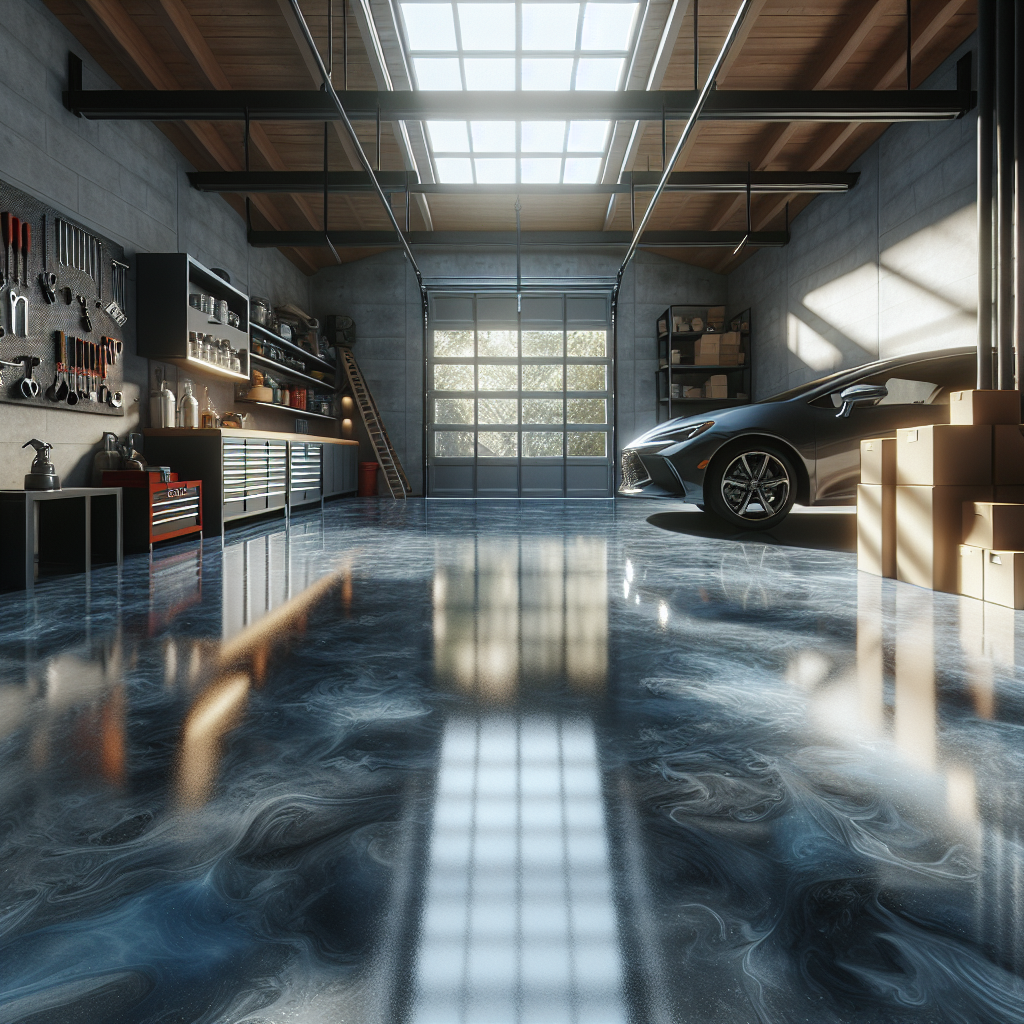Garage floor epoxy is a robust and versatile flooring solution that transforms ordinary concrete surfaces into durable, attractive spaces. This type of coating is made from a combination of resin and hardener, which when mixed together, create a chemical reaction that results in a hard, long-lasting finish. One of the primary benefits of garage floor epoxy is its ability to withstand heavy loads, making it ideal for garages that frequently house vehicles, tools, and equipment.
Moreover, epoxy floors are resistant to chemicals, stains, and moisture, ensuring that spills from automotive fluids or cleaning agents won’t damage the surface. This resistance helps maintain the aesthetic and functional quality of your garage over time. Additionally, epoxy coatings offer a high-gloss finish that reflects light, enhancing visibility in the workspace and creating a more open feel.
Another noteworthy advantage is the ease of maintenance. Regular cleaning of an epoxy floor is a breeze; a simple sweep and occasional mopping with mild detergent are typically all that’s required. Furthermore, epoxy flooring can be customized with various colors and patterns, allowing homeowners to personalize their garage space. This customization not only boosts the visual appeal but can also increase property value.
For anyone considering an upgrade to their garage, understanding the advantages of garage floor epoxy is essential. Call Us Today for a Free Quote and let our experts at Americas Industrial Coatings in Fort Lauderdale help you achieve the perfect garage floor.
Factors Affecting Garage Floor Epoxy Drying Time
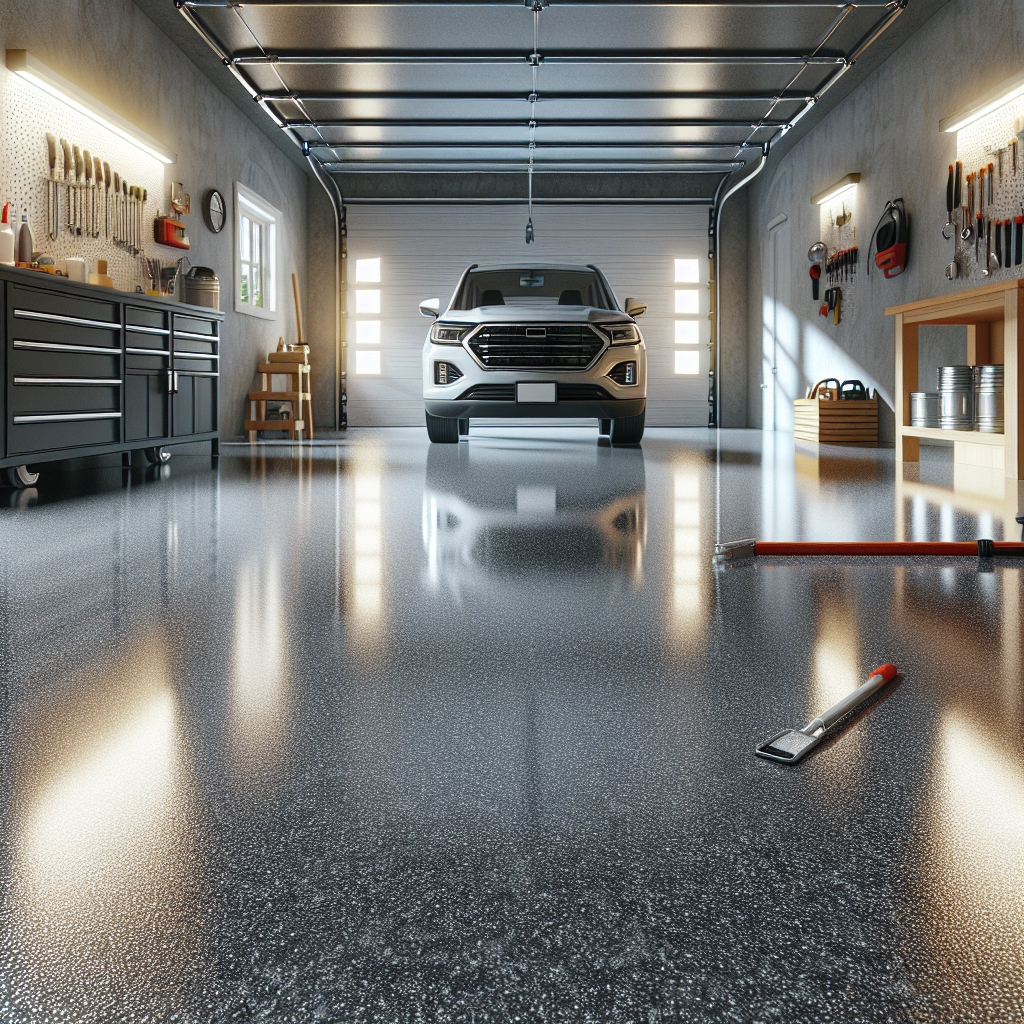
The drying time of garage floor epoxy is influenced by several factors that can affect the overall outcome of your flooring project. Understanding these factors is crucial for achieving the best results.
- Temperature: The ambient temperature plays a significant role in the curing process of epoxy. Ideally, temperatures between 60°F and 90°F are optimal for drying. Lower temperatures can slow down the curing time, while higher temperatures may accelerate it, potentially leading to an uneven finish.
- Humidity: High humidity levels can also extend drying times. When the air is saturated with moisture, the epoxy may take longer to cure properly. It’s best to apply epoxy in conditions with less than 70% humidity for optimal results.
- Thickness of Application: The thickness of the epoxy layer directly impacts how long it takes to dry. Thicker applications require more time to cure completely, while thinner layers will dry more quickly. Following the manufacturer’s guidelines for application thickness can help ensure proper curing.
- Type of Epoxy: Different epoxy formulations come with varying drying times. Some products are designed for rapid curing, while others may take longer. Be sure to check the specifications of the epoxy you are using to plan accordingly.
By considering these factors, you can better manage expectations for your garage floor epoxy drying time, ensuring a successful application.
Typical Drying Times for Garage Floor Epoxy

When it comes to garage floor epoxy, understanding the typical drying times is essential for planning your project effectively. While drying times can vary based on the factors discussed earlier, there are general guidelines that can help you set realistic expectations.
- Initial Set Time: Most garage floor epoxy products will begin to set within 30 minutes to 2 hours after application. During this time, the epoxy will feel tacky but still be workable. This is the window for making any necessary adjustments or touch-ups.
- Drying Time: After the initial set, the epoxy will typically dry to the touch within 4 to 6 hours. However, it’s crucial to note that being dry to the touch doesn’t mean it’s fully cured.
- Cure Time: Full curing of garage floor epoxy usually takes between 5 to 7 days. During this period, the epoxy continues to harden and develop its maximum strength. It’s advisable to avoid heavy foot traffic or placing any items on the floor until the curing process is complete.
- Factors Influencing Times: As mentioned earlier, temperature, humidity, and the specific product used can significantly impact these drying and curing times. Always refer to the manufacturer’s recommendations for the best results.
By being aware of these typical drying times, you can better plan your schedule and ensure your garage floor epoxy installation is a success.
Best Practices for Achieving Optimal Drying
To ensure that your garage floor epoxy dries optimally and achieves the best results, following certain best practices is essential. Implementing these tips can significantly enhance the durability and appearance of your epoxy flooring.
- Temperature Control: Aim to apply epoxy when temperatures are between 60°F and 85°F. This range provides an ideal environment for drying and curing. Avoid applying epoxy in extreme cold or heat, as this can affect the chemical reaction.
- Humidity Levels: Low humidity levels (ideally below 70%) can help the epoxy cure more effectively. High humidity can prolong drying times and potentially lead to issues like bubbling or improper adhesion.
- Proper Ventilation: Ensure that your garage is well-ventilated during the drying process. Good airflow helps to accelerate the drying time and reduces the risk of fumes accumulating. Opening windows or using fans can greatly improve ventilation.
- Follow Manufacturer Instructions: Always adhere to the specific instructions provided by the epoxy manufacturer. Each product may have unique requirements regarding mixing ratios, application techniques, and drying times.
- Avoid Heavy Traffic: To prevent damage to the newly applied epoxy, avoid foot traffic for at least 24 hours after application. For best results, wait the full 5 to 7 days for complete curing before placing heavy items or vehicles on the floor.
By following these best practices, you can achieve a stunning and long-lasting finish for your garage floor epoxy.
How to Test Garage Floor Epoxy Dryness
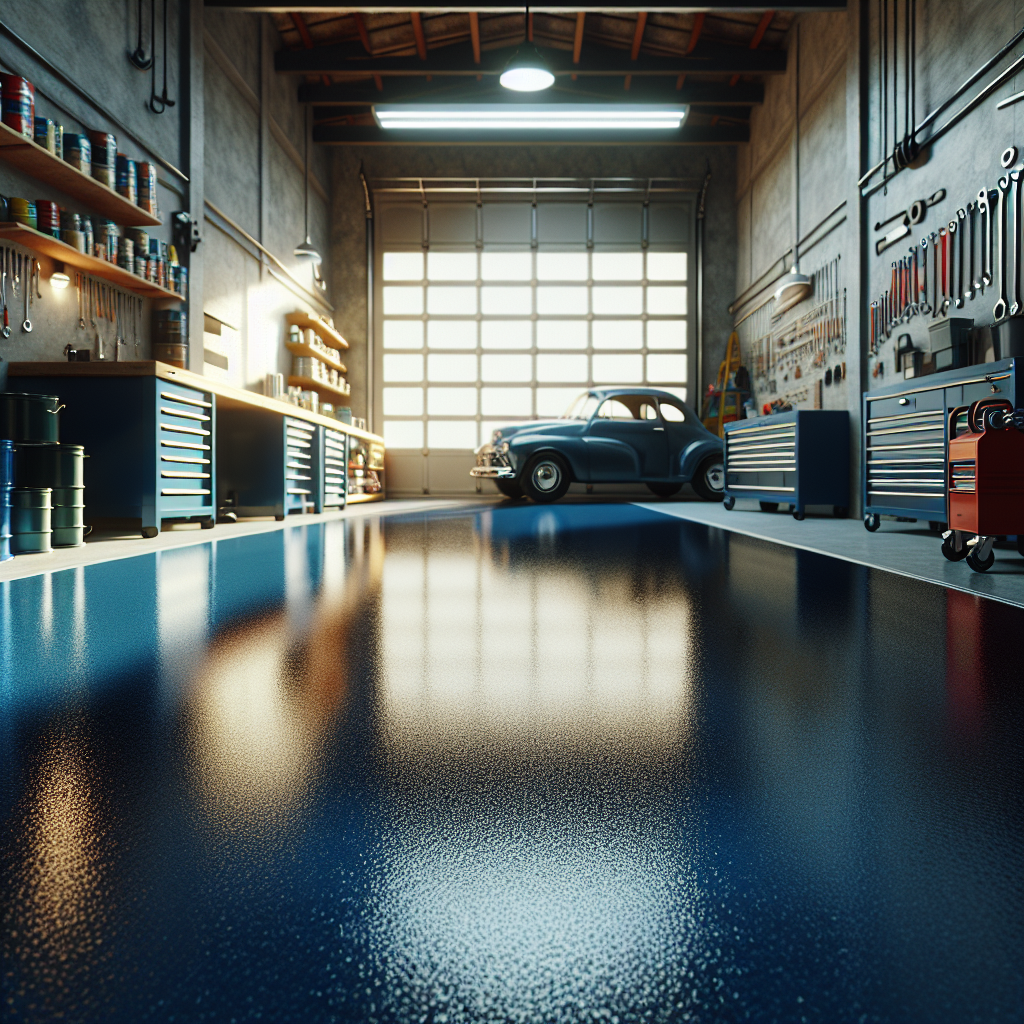
After applying garage floor epoxy, it’s crucial to ensure that it has dried properly before subjecting it to regular use. Testing the dryness of the epoxy can help you avoid issues related to improper curing. Here are some effective methods for assessing the dryness of your epoxy floor:
- Touch Test: Gently press your fingertip against a small, inconspicuous area of the epoxy. If the surface feels tacky or leaves a residue on your finger, it indicates that the epoxy is not yet dry. A properly cured surface should feel firm and dry to the touch.
- Visual Inspection: Look for any signs of unevenness or discoloration in the epoxy. A fully cured surface should have a consistent appearance without any cloudy spots or bubbles. If you notice any irregularities, it may indicate insufficient drying.
- Water Test: To perform a simple water test, place a small amount of water on the epoxy surface. If the water beads up and rolls off, the epoxy is likely dry. However, if the water soaks in or spreads out, this suggests that the epoxy may still be curing.
- Timing: Refer to the manufacturer’s guidelines regarding curing times. While initial drying may occur within a few hours, full curing can take several days. It’s essential to adhere to these timeframes before subjecting the surface to heavy use.
By utilizing these testing methods, you can ensure that your garage floor epoxy is completely dry and ready for use, preventing any potential damage or performance issues.
Essential Maintenance Tips for Epoxy Floors
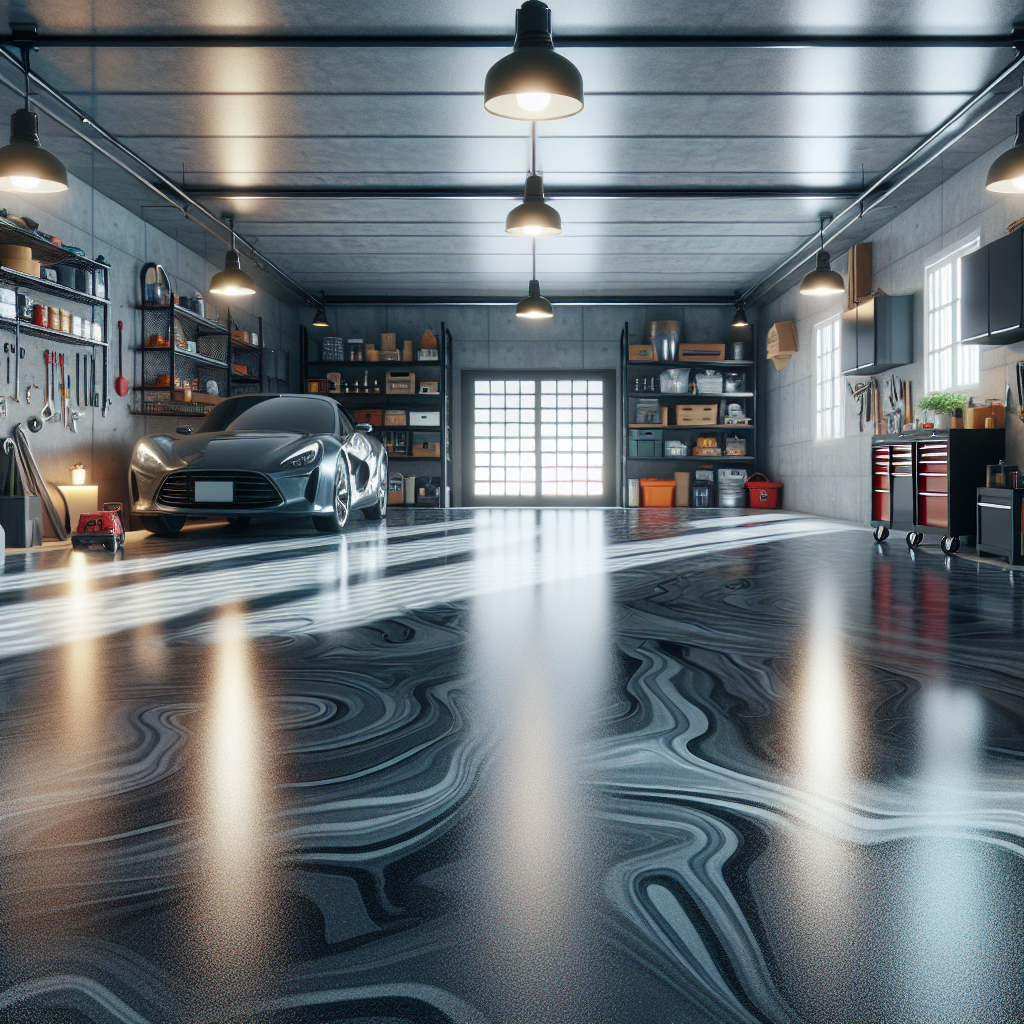
Once your garage floor epoxy has cured successfully, maintaining its pristine condition is vital for longevity and aesthetics. Here are some essential maintenance tips to keep your epoxy floors looking their best:
- Regular Cleaning: Sweep or vacuum the floor regularly to remove dirt and debris. For deeper cleaning, use a damp mop with a mild detergent. Avoid harsh chemicals that could degrade the epoxy.
- Prompt Spill Cleanup: Be quick to clean up any spills, especially oil or chemicals, to prevent staining. Use a soft cloth or paper towel to blot the area, and rinse with water afterward.
- Avoid Heavy Equipment: While epoxy floors are durable, avoid dragging heavy equipment or machinery across the surface as it may scratch or damage the finish. Use mats or pads under heavy items.
- Inspect Regularly: Periodically check for signs of wear, such as peeling or bubbling. Address any issues immediately to prevent further damage.
- Recoat When Necessary: Depending on use, epoxy floors may need a recoat every few years to maintain their glossy finish and protective qualities. Consult a professional for the best advice on when to reapply.
By following these maintenance tips, you can ensure your epoxy floors remain in excellent condition for years to come. If you’re considering an epoxy installation or need further information, Call Us Today for a Free Quote.
